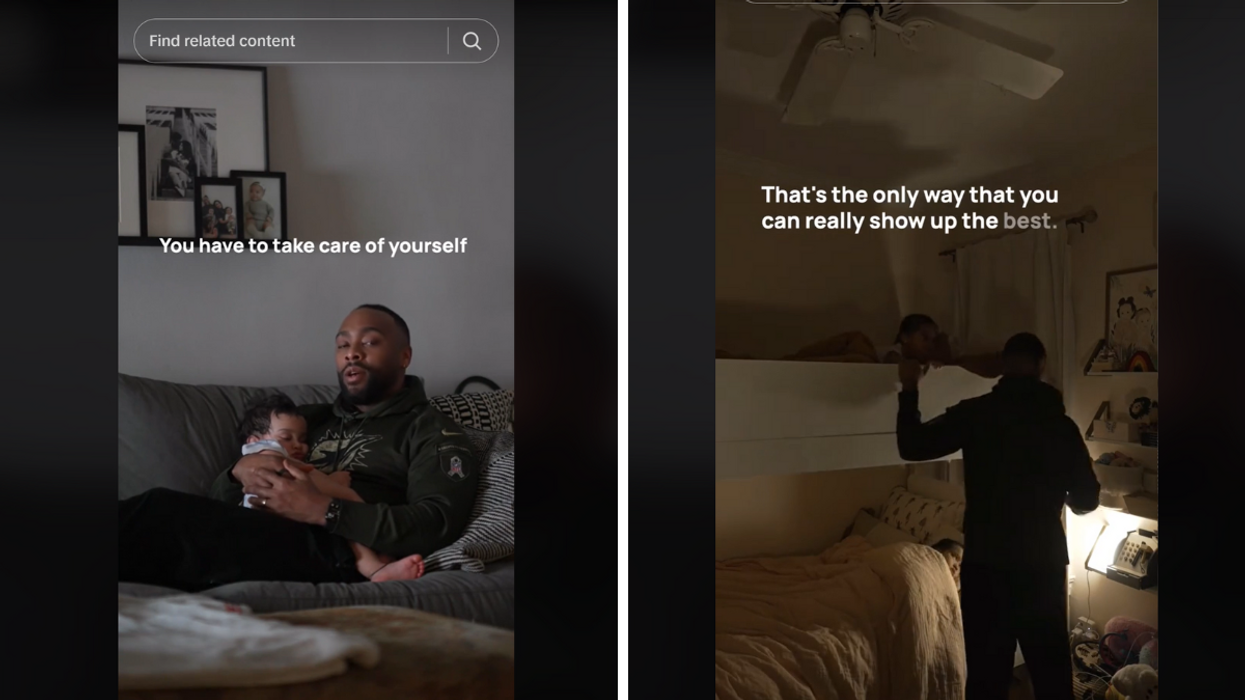
Setting SMART Goals for Teachers and Educators
Once you start setting SMART goals, its hard to go back.
Teachers are the unsung heroes of our society. Our educators and their teaching skills shape future generations not just educationally but socially and emotionally, helping children (and adults!) learn and grow. When teachers set goals in their professional life, they can better serve their students and set a great example.
Educational research shows that it is important for teachers to set both professional and personal goals that allow them to do their jobs more effectively, that prevent teacher burnout, and that help them stay inspired to do what they do, day in and day out. By setting goals that are actually achievable, teachers can thrive and continue to dream big on their own behalf and on behalf of their students.
When it comes to setting goals you can stick to for the long term, the go-to advice is to apply the SMART system for goal setting. This allows you to create goals you can stick to, while also acknowledging what’s achievable and measurable for where you're at right now.
Here’s how teachers can set SMART goals for professional development and the betterment of those they teach. With this system in mind, you can make every year an amazing school year.
What are SMART goals?
The purpose of setting SMART goals is to help you frame your objectives in a concrete, easily measurable way. (We’ll soon get into some SMART goals examples to show you how it all works.) The idea is that you use the SMART acronym whenever you set a goal to make sure it checks the following five adjectives:
- Specific
- Measurable
- Achievable
- Relevant
- Time Bound
Using this framework, SMART goals help you create a solid framework around what you want to accomplish - and this doesn’t have to be restricted to teaching. SMART goals can help you learn new skills, lose weight, change your attitude, and much more. Instead of setting vague goals that are hard to measure success by, SMART goals set you up for success from the get-go.
Anytime you set a goal, whether these are professional goals, or objectives aimed at student motivation or student progress, you should make sure it meets all of the SMART criteria. You can ensure that your goals hit these benchmarks by asking yourself the following five questions:
How specific is your goal?
Let’s say you want to work on your own professional development. There’s a big difference between setting a goal to simply work on professional development and setting a goal detailing the amount of time and the modality you’ll choose to do that development, whether it’s taking an online class or reading books for self-study.
The idea of “working on” something is vague because it’s not specific enough to give you the motivation to follow through. When you set a goal, be as concrete as possible. This will help you stay on track.
How measurable is your goal?
Next, you’ll want to determine how you will measure your success. Setting a certain amount of hours, raising a certain amount of money, raising the class grade point average by a certain amount of points is concrete.
Make sure that your goal includes some kind of number that you can measure your success by or commit to. Having something tangible to hold on to allows you to more easily track your progress and keep yourself accountable at the same time.
How achievable is your goal?
As a teacher, one of your roles is to help your students write, read and learn more effectively. You want them to dream big in every class period, reach for the stars and all of those other cliche phrases you see on posting hanging up in classrooms or around schools.
But you also need to tow the line between setting yourself up for failure and setting strong enough goals that you can actually achieve in the context of student work. Trying to get the classroom ready for the new year in one day is likely not feasible. Working on the classroom design for a set amount of hours a few weeks before school starts is more achievable.
To help you set goals that you can accomplish, be clear about your intentions, your abilities, your financial constraints and your time constraints when you are mapping out your objective.
How relevant is your goal?
Timing is everything, as the saying goals. The same is true for goal setting. Understanding if now is the right time for a certain goal is an important part of the SMART model. Is this goal worth your time, right now? Do you have enough bandwidth to make this goal happen? Would another time be more ideal?
It’s easy for teachers to get burnt out trying to do everything for their students. Keep a healthy perspective about your goals. Trying to get your Ph.D at night while teaching full time at a high school, for instance, may stretch you too thin.
How time bound is your goal?
When you give yourself a firm deadline for a goal, you’re typically more motivated to achieve it. Saying that you’re going to commit to a healthier lifestyle, for instance, isn’t as meaningful as saying that you’re going to take a 15 minute walk every day during your lunch break. Setting boundaries, such as that you’re going to hold office hours every Tuesday for three hours, will be a better way to communicate with students than allowing them to email you 24/7 with questions.

Although your needs around time may change (you might want to do longer walks in the summer and shorter walks in the winter or you might allow students to email questions in the days leading up to an exam), having that time bound framework is important. You not only give yourself a hard deadline for accomplishing your goals but you also can use this framework to protect your time so you don’t get overwhelmed
Why is it important for teachers to set SMART goals?
Teachers want the best for their students. Year after year, they set out to inspire, assist and challenge kids and adults of all ages. SMART goals give teachers the framework to make their objectives happen.
Turning fluid, vague goals into specific, measurable benchmarks transforms your hopes for your students into reality. SMART goals can also help improve teachers’ relationships with their students when this framework is used in the classroom, as well as increase student motivation when they have these goals to achieve as well. In addition, they can support students’ progress—not to mention teachers’ professional development, too.
There are a number of ways to implement these goals for teachers: when figuring out lesson plans, when evaluating students’ work, when defining your teaching practices and when measuring student engagement, just to name a few.
SMART goals are effective—they set the stage for conscious intentions. When you set you and your students up for success, you can work together to keep improving. Watching your students’ pride in achieving a SMART goal you’ve created for the class will continue to inspire you, and them, to keep setting objectives. Whether you set goals for this week’s lessons or objectives to be achieved by the end of the school year, using this useful acronym will get you where you want to be.
SMART goals for teachers examples
To fully understand how to set SMART goals, it may be important to see how they work in practice with examples of real teacher goals. Here are just a few sample goals and how you can transform them into SMART goals. (For your own goals, you can use this SMART goals template to help you with your specific objectives.)
Goal: Improve classroom organization
SMART goal: Set aside at least one hour per day after school to declutter old files and organize classroom materials before the end of the school year.
S: You’re working on throwing away old materials and organizing existing materials.
M: You will be finished when you’ve tackled each drawer, bookshelf and cabinet.
A: One hour a day is achievable without getting overwhelmed by the tasks, especially if students take turns staying after school to help you for extra credit points.
R: This goal is relevant because your classroom is currently disorganized.
T: You will only spend one hour a day so that you have time for grading papers, time with your family and other important things you need to do.
Goal: Help students feel more comfortable with public speaking
SMART goal: Establish a rotation where each student gets a chance to lead a 20 minute discussion of material once per week.
S: You’re helping students with public speaking by asking them to lead discussions.
M: Each student will sign up for leading discussion, allowing you to make sure everyone gets a turn to speak.
A: This student discussion goal is achievable because it gives everyone a chance without being overwhelming or taking up too much teaching time.
R: With summer coming up, students need speaking experience when interviewing for summer jobs.
T: Each discussion is 20 minutes once a week, giving students a finite amount of time to lead their discussions and making sure everyone gets the same amount of time.
Goal: Nurture your own learning and abilities as a teacher
SMART Goal: By the end of the month, I will sign up for an online continuing educational course to continue my professional development.
S: You are signing up for a specific online course.
M: You can measure this goal by whether or not you actually sign up.
A: This goal is achievable because you have time in your schedule to complete an online course.
R: You have wanted to sign up for an online course for months but haven't done it yet.
T: You have until the end of the month to achieve this goal.
Goal: Allow student to work together toward a common goal
SMART goal: Organize a bake sale and raffle next month to raise $300 for the upcoming class trip.
S: You are organizing a specific event with a specific goal.
M: You can measure success by the amount of money made, as well as how well the students work together on organizing the bake sale and raffle.
A: You think that $300 is an achievable goal given that you’ll be hosting both a bake sale and a raffle.
R: This goal is relevant because the students need to raise money for the trip and they could use an incentive to bond together as a class.
T: This goal is time bound because the event will take place next month.
Goal: Establish better communication with parents
SMART goal: I will send out a weekly recap email to parents on Thursday nights, sharing three highlights from the week and reminding them about important upcoming dates.
S: You are sending out a weekly email to parents with specific information included.
M: You can measure this goal by whether or not you send these emails.
A: You have time in your schedule to send out a detailed email like this once per week without it becoming an overwhelming task.
R: You feel this goal is relevant because parents are curious about what’s going on in the classroom and not every parent has the ability to volunteer at school.
T: This goal is time bound because you have outlined a specific day each week when you send this email.
Goal: Don’t get burnt out grading student essays.
SMART goal: I will grade three essays each day for 10 days.

S: You are spacing out grading your students’ essays.
M: You will grade three essays a day for two weeks to finish grading all 30 essays before the end of the month.
A: Three essays is achievable because they won’t be longer than 10 pages.
R: You need to have these essays graded in less than two weeks but doing them all at once will be too much.
T: You need to get this done before the end of the month when final grades are due.
Paying SMART goals forward
Once you start setting SMART goals, it’s hard to go back to the more vague, open-ended way of setting benchmarks for yourself. When you see how much you’re able to achieve—how productive you can really be—with SMART goals, you will be encouraged to keep setting goals for yourselves, and for your students.
Moreover, you can pay it forward to your students and teach them how to set SMART goals for themselves. (These SMART goals for students are a good place to start.) Work with your students to help them set their own specific, achievable objectives so they really can start fulfilling their dreams.


















 gold wedding band on white textilePhoto by
gold wedding band on white textilePhoto by  man and woman sitting on bench in front of beachPhoto by
man and woman sitting on bench in front of beachPhoto by 













